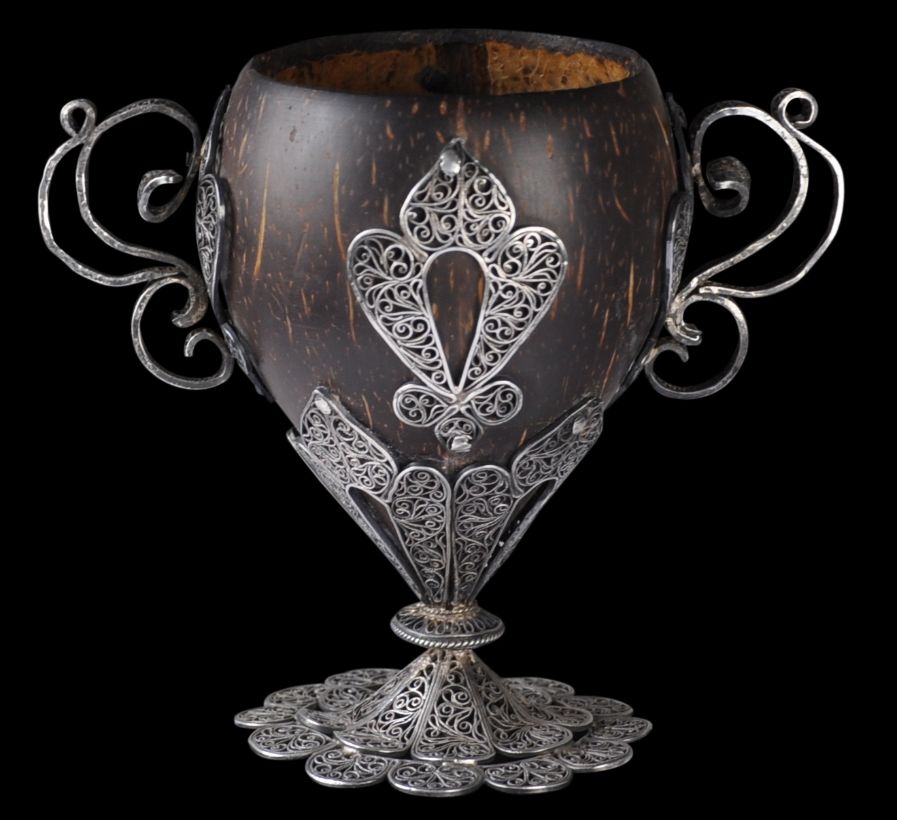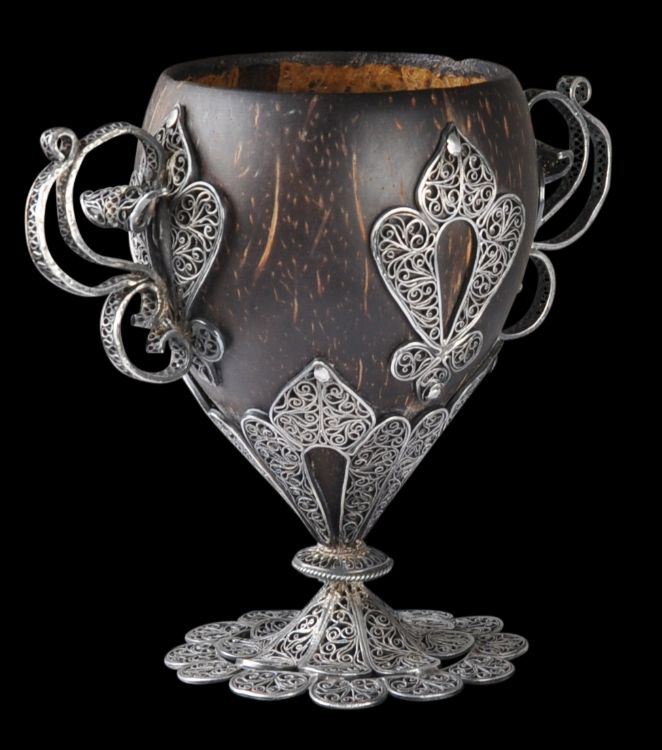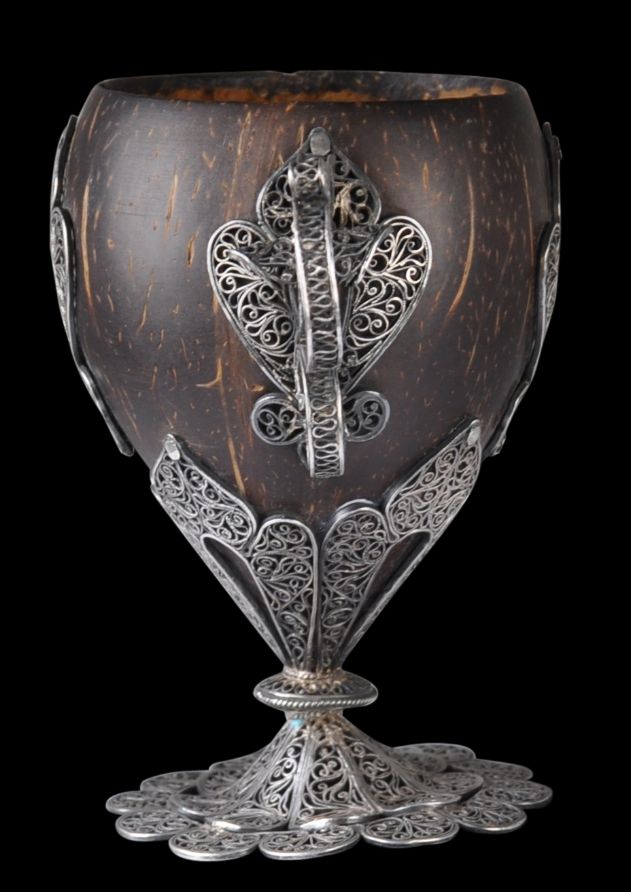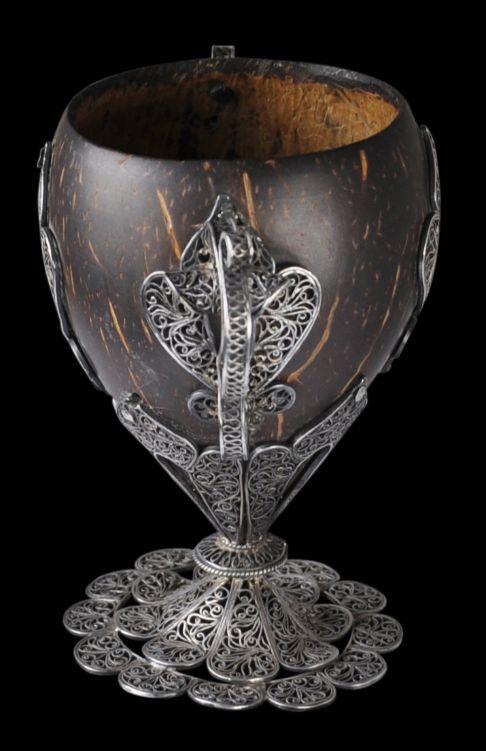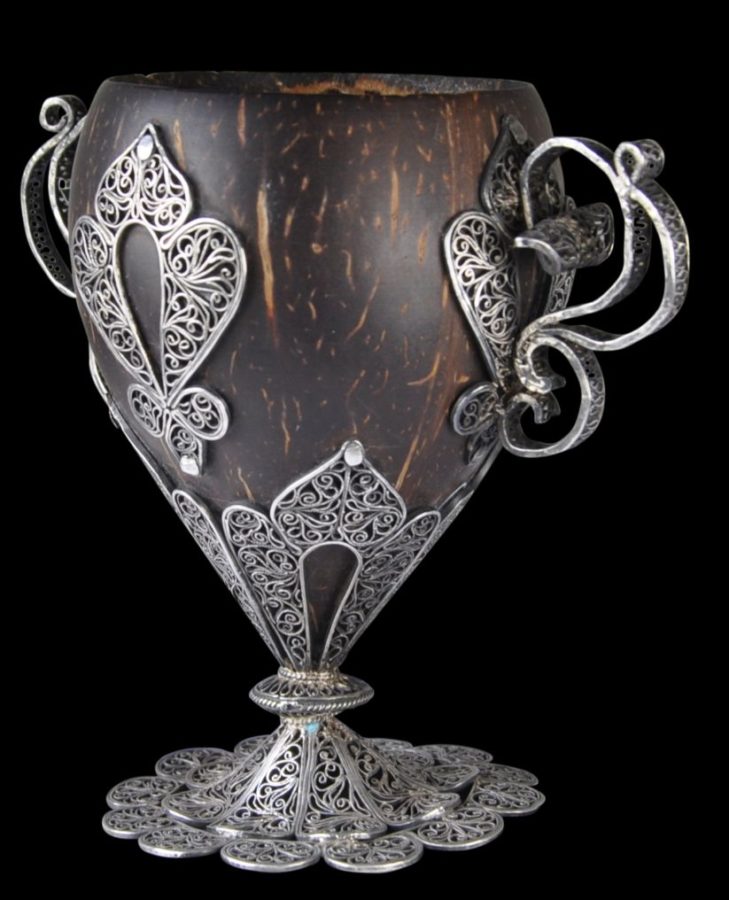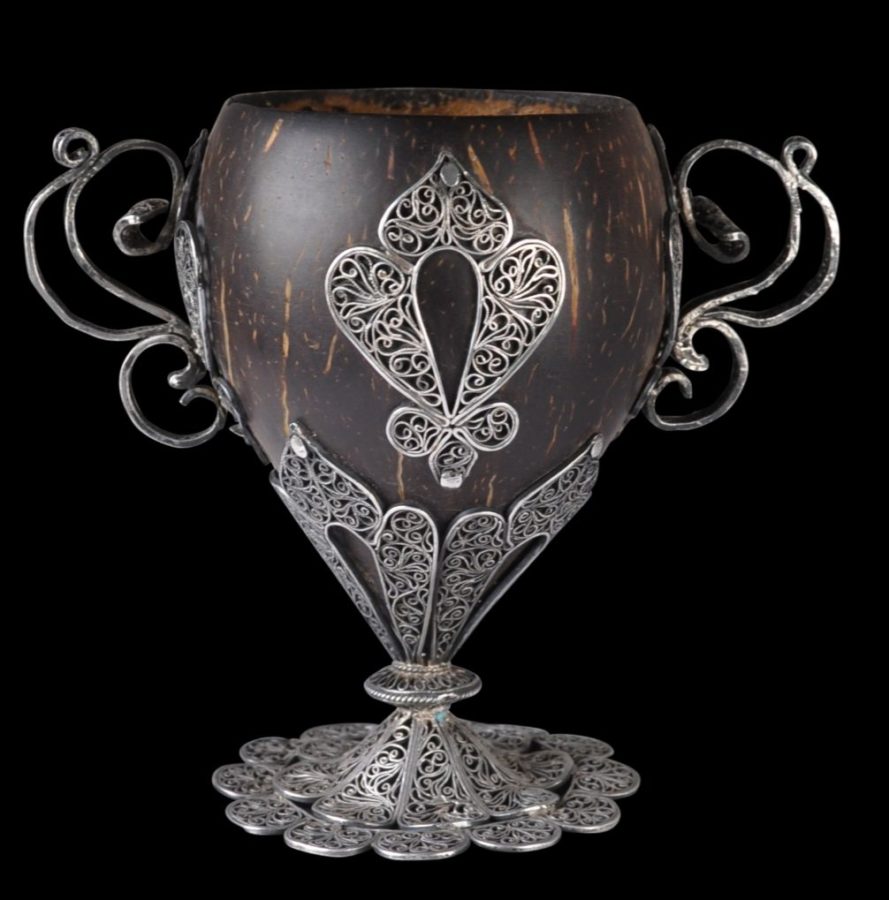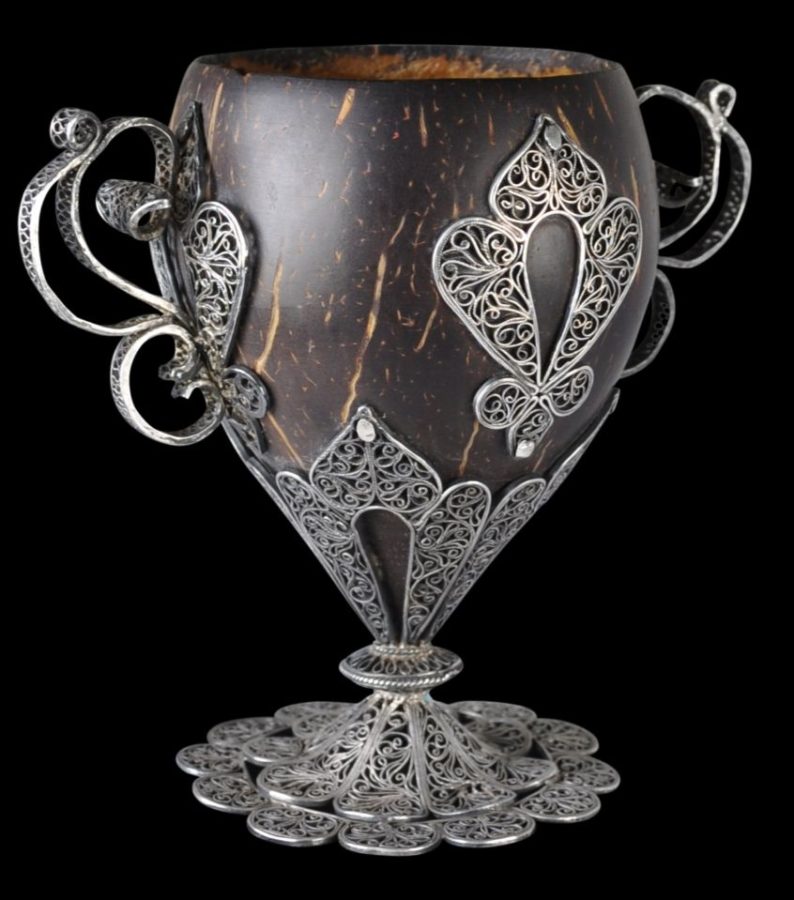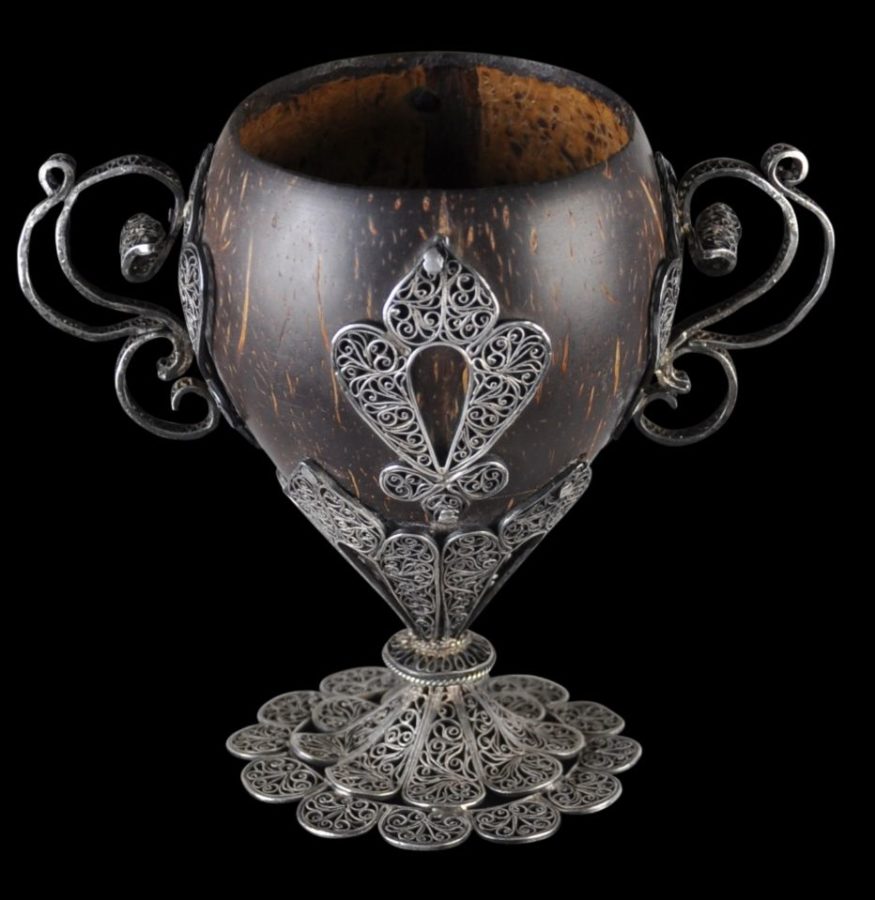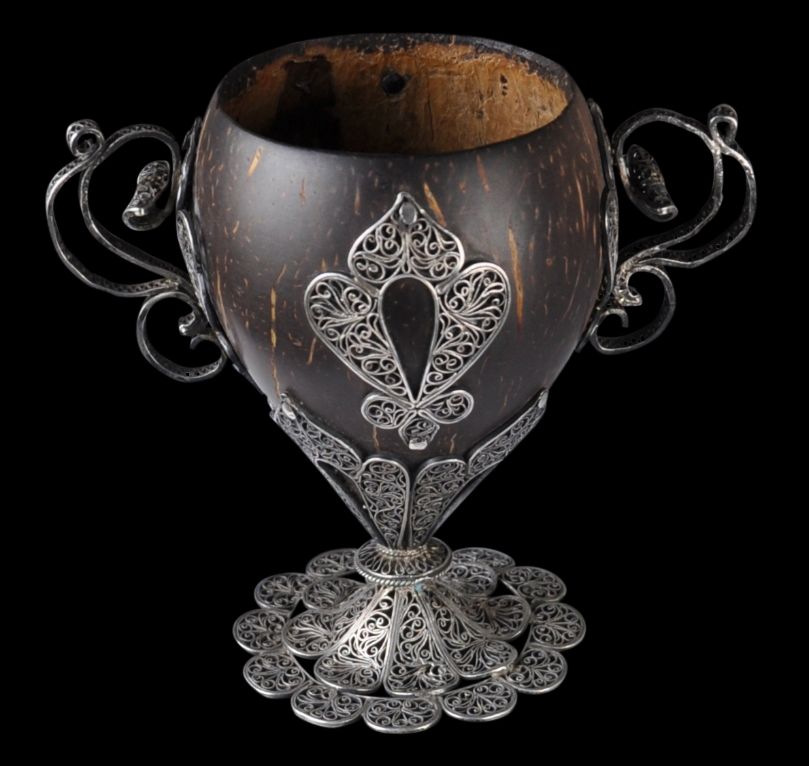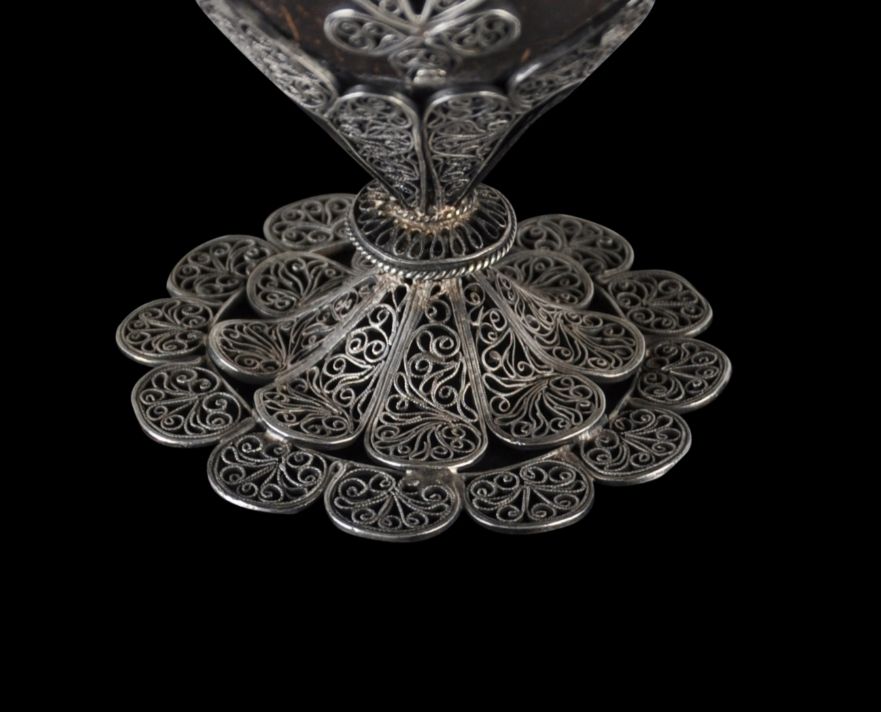This cup of polished coconut shell set with file, silver filigree mounts was made for the Portuguese/Spanish market in the 17th century. Precisely where such cups were made is variously given as either Goa in India, West Sumatra or the Philippines. Occasionally, colonial South America is also mentioned but probably that is because similar cups have been found there leading to the assumption that they must have thus been made there, when in fact their movement around the world in the 17th century was very much a product of the Spanish Galleon trade. The precise origins of these cups was no doubt obscured by trans-shipping at the time. Also, it is possible that they were made in several locations concurrently.
The cup has a fine, flared foot composed entirely of silver filigree. There are two handles on each side. These are of thicker silver wires infilled with finer silver filigree work. And there are the silver filigree panels that adorn the sides of the coconut. These are attached to the nut by means of small silver pins.
Cups such as these appear in several important museum collections around the world. Four are in the Hermitage in St Petersburg and are illustrated in Piotrovsky (2006, p. 22) and are given dates of 1600-1650 with a possible provenance to Goa. A set of twelve related cups are in Vienna’s Kunsthistorisches Museum. Another related cup with a lid and tray is illustrated in Seipal (2000, p. 206) where it is ascribed to 17th century Goa and also in Veenendaal (2014, p. 128) where it ascribed to West Sumatra, circa 1700. Miguel Crespo (2019, p. 342) illustrates a related pair with lids but no handles and attributes them to 17th century Philippines.
Moura Carvalho (2008, p. 50) illustrates a related cup made with a moulded gourd with similar silver filigree mounts, attributed to early 17th century Goa (probably).
Related filigree work appears on some communion chalices in Guatemala and Mexico (see Esteras Martin, 1994, p. 100, and Palomero Paramo, 1992, p. 34 for examples) and these have been attributed to 17th century Mexico and Guatemala but probably it is more likely that these items were trade pieces and have their origins in Asia. Another intriguing possibility – and this might be the case with the cup here too – is that these filigree items were made in what is now Mexico (then known as Nueva España) in the early 17th century by Chinese silversmiths who had left Manila in the wake of anti-Chinese massacres there and resettled in Spain’s colonies in central America. Large numbers of slaves and indentured labourers also were taken from Southeast Asia on the so-called Manila Run to what is now Mexico. Many were of Chinese descents and locally became known as chinos. It is quite possible that some of these also were involved in silversmithing and so Southeast Asian Chinese silversmithing techniques were used concurrently in Manila and elsewhere in Southeast Asia as well as in Nueva España.
The example here is in excellent condition. There are no losses to the filigree.
References
Corrigan, K., J. van Campen, & F. Diercks (eds.), Asian in Amsterdam: The Culture of Luxury in the Golden Age, Peabody Essex Museum/Rijksmuseum, 2015.
Esteras Martin , C., La Plateria en el Reino de Guatemala, Siglos XVI-XIX, Fundacion Albergue Hermano Pedro, 1994.
Jordan, A. et al, The Heritage of Rauluchantim, Museu de Sao Roque, 1996.
Jordan-Gschwend, A., & K.J.P. Lowe (eds.), The Global City: On the Streets of Renaissance Lisbon, Paul Holberton Publishing, 2015.
Marsden, W., The History of Sumatra: Containing an Account of the Government, Laws, Customs and Manners of the Native Inhabitants, with a Description of the Natural Productions, and a Relation of the Political State of that Island, 1784.
Miguel Crespo, H. (ed.), The Art of Collecting: Lisbon, Europe, and the Early Modern World (1500-1800), AR/PAB, 2019.
Moura Carvalho, P., Luxury for Export: Artistic Exchange between Indian and Portugal around 1600, Gutenberg Periscope Publishing, 2008.
Palomero Paramo, J.M., Plata Labrada de Indias, Patronato Quinto Centrenario – Huelva, 1992.
Piotrovsky, M. et al, Silver: Wonders from the East – Filigree of the Tsars, Lund Humphries/Hermitage Amsterdam, 2006.
Seijas, T., Asian Slaves in Colonial Mexico: From Chinos to Indians, Cambridge University Press, 2014.
Seipal, W. (ed.), Exotica: Portugals Entdeckungen im Spiegel furstlicher Kusnt – und Wunderkammern der Renaissance, Skira, 2000.
Veenendaal, J., Asian Art and the Dutch Taste, Waanders Uitgevers Zwolle, 2014.


